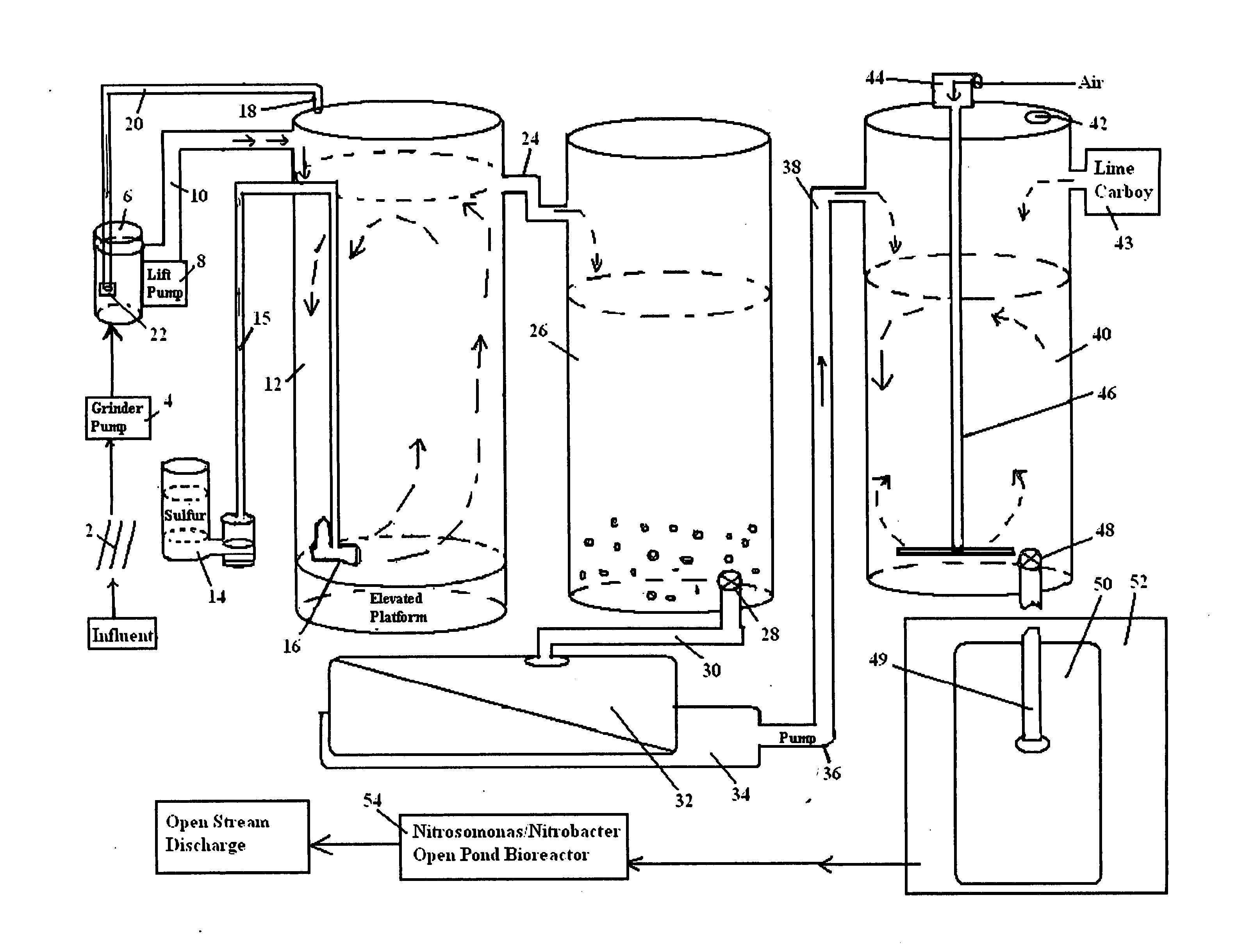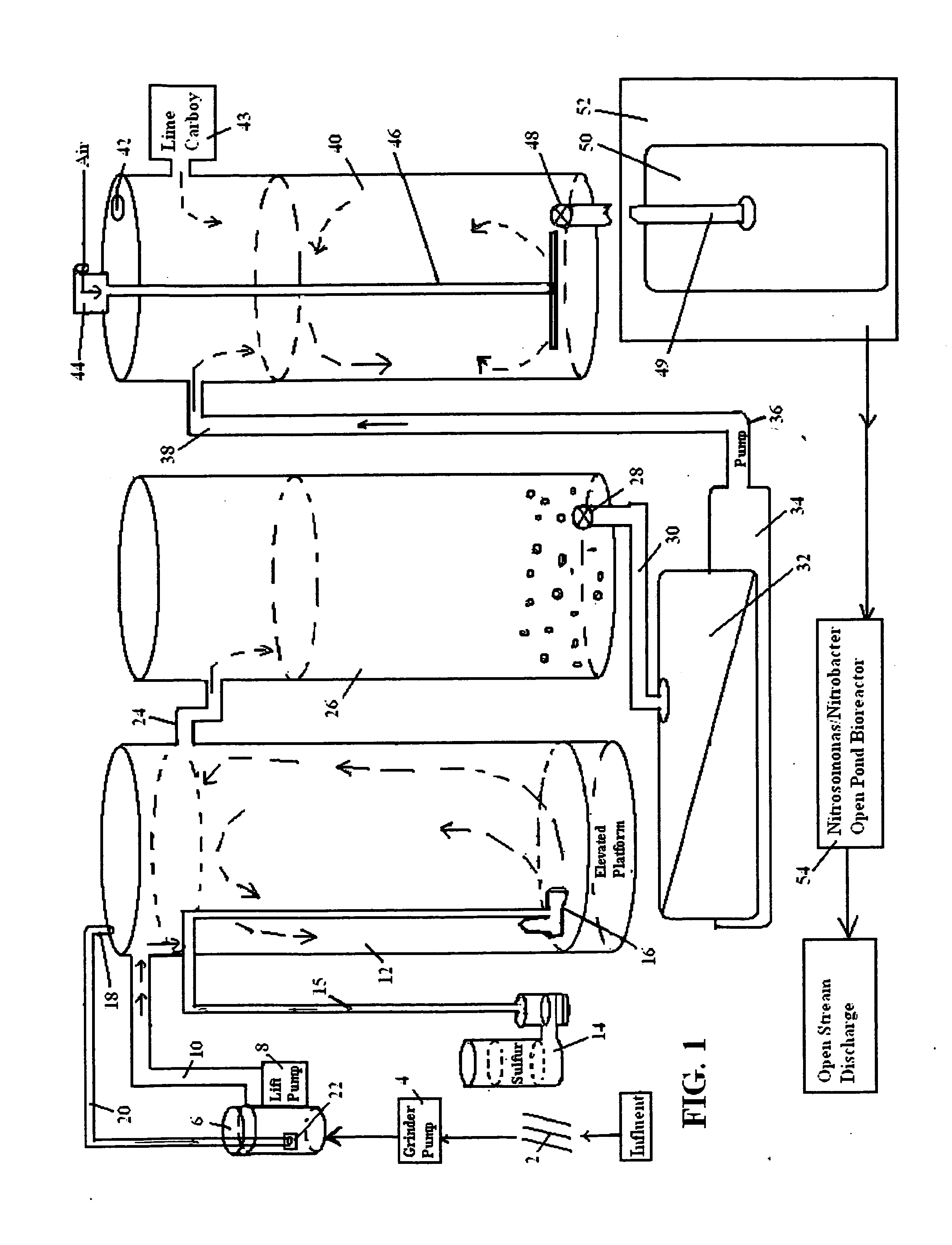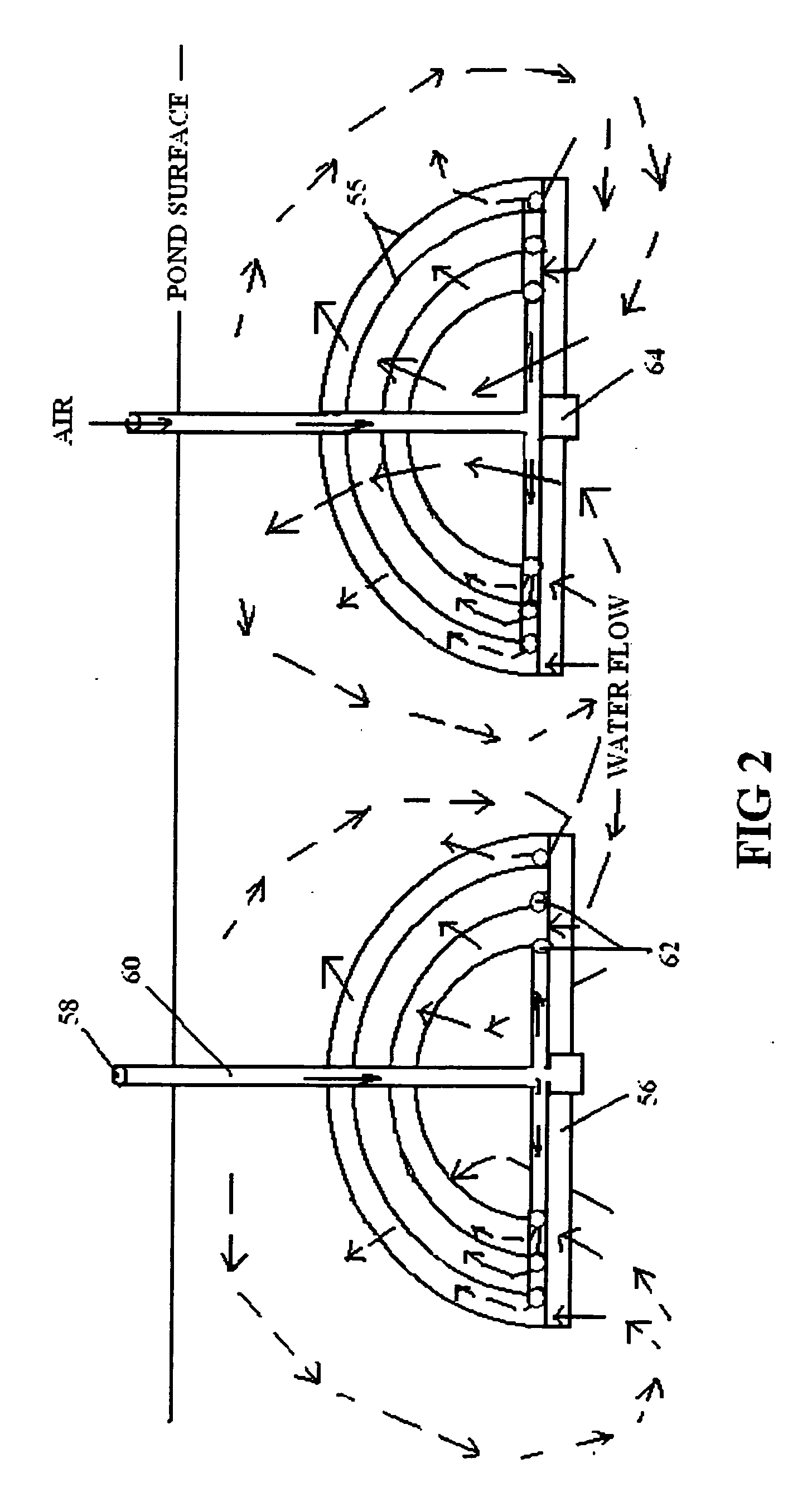Wastewater chemical/biological treatment method for open water discharge
a biological treatment and open water technology, applied in biological water/sewage treatment, multi-stage water/sewage treatment, plant cultivation, etc., can solve the problems of increasing carbon dioxide emissions, reducing the content of treated wastewater brine, and wasting energy of wastewater systems, so as to reduce the footprint of open pond treatment plants and improve the effect of nitrosomonas production and nitrosomonas production
- Summary
- Abstract
- Description
- Claims
- Application Information
AI Technical Summary
Benefits of technology
Problems solved by technology
Method used
Image
Examples
Embodiment Construction
[0060]FIG. 1 illustrates a typical layout of the wastewater treatment method disinfecting and adjusting the recovered treated wastewater for nitrogen removal before open stream discharge. The wastewater is screened with bar screens 2 to remove courser solids before grinding with a grinder pump 4 and passing into an open tank 5. There it is pumped with a lift pump 8 through a conduit 10 into an acid mixing tank 12. A sulfur dioxide generator 14 is connected with conduit 15 a jet aerator 16 drawing in air into the sulfur generator 14 to create sulfur dioxide for admixing into the screened wastewater by the jet aerator 16. The sulfur dioxide-treated screened wastewater is thoroughly saturated with sulfur dioxide and any excess bled off with a pressure relief outlet 18 to pass through a conduit 20 leading to an aspirator 22 to inject surplus sulfur dioxide into the entering influent.
[0061]The sulfur dioxide treated wastewater passes from the acid mixing tank 12 through a conduit 24 into...
PUM
 Login to View More
Login to View More Abstract
Description
Claims
Application Information
 Login to View More
Login to View More - R&D
- Intellectual Property
- Life Sciences
- Materials
- Tech Scout
- Unparalleled Data Quality
- Higher Quality Content
- 60% Fewer Hallucinations
Browse by: Latest US Patents, China's latest patents, Technical Efficacy Thesaurus, Application Domain, Technology Topic, Popular Technical Reports.
© 2025 PatSnap. All rights reserved.Legal|Privacy policy|Modern Slavery Act Transparency Statement|Sitemap|About US| Contact US: help@patsnap.com



